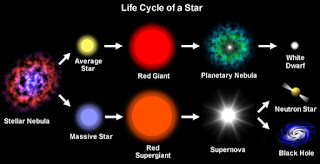MARS
The possibility of life on Mars is a subject of significant interest to astrobiology due to the planet's proximity and similarities to Earth. To date no proof has been found of past or present life on Mars. However, cumulative evidence is now building that the ancient surface environment of Mars had liquid water and may have been habitable for microorganisms.
Modern scientific inquiry has emphasized that the search for water, chemical biosignatures in the soil and rocks at the planet's surface, and biomaker gases in the atmosphere on November 22, 2016, NASA reported finding a large amount of underground ice in the Utopia Planitia region of Mars.
Mass is of particular interest for the study of origins of life because of its similarity to the early Earth.
On January 24, 2014, NASA reported that the curiosity and opportunity rovers started searching for evidence of past life, including a biosphere based on autotrophic chemotrophic, or chemolithoautophic microorganisms, as well as the ancient water, including fluviolacustrine environments (plains related to ancient rivers or lakes) that may have been habitable. The search for evidence of habitability taphonomy (related to fossils) and organic carbon on the planet Mars is now a primary NASA objective.
Early Speculation
In the later part of 18th century, William Herschel proved Mars' polar ice caps grow and shrink alternately, in the summer and winter mass had certain other similarities to Earth, for example that the length of a day on Mars was almost the same as a day on Earth, its axial tilt was similar to Earth's, but of nearly double the length of moving to its much longer year.
These observations led to the increase in speculation that the darker albedo features were water and brighter ones were land. It was therefore natural to suppose that Mars may be inhabited by some form of life.
Sub- Surface
Although Mars soils are likely not to be overly toxic to terrestrial microorganisms, life on the surface of Mars is extremely unlikely because it is bathed in radiation and is completely frozen. The radiation environment on the surface, as recently determined by Curiosity Rover, "is so high that any biological organisms would not survive without protection." Therefore the best potential locations for discovering life on Mars may be at subsurface environments that have not been studied yet.
The extensive volcanism in the past possibly created subsurface cracks and curves within different strata where liquid water could have been stored, forming large aquifers with deposits of saline liquid water, and mineral, organic molecules, and geothermal heat – potentially providing a habitable environment away from the harsh surface conditions.
Possible Biosignatures
Possible trace amounts of methane in the atmosphere of Mars were first discovered in 2003 with Earth based telescopes and fully verified in 2004 by the ESA Mars Express spacecraft in orbit around Mars. As methane is an unstable gas, its presence indicates that there must be an active source on the planet in order to keep such levels in the atmosphere.
The existence of life in the form of microorganisms such as methanogens is among possible, but as yet unproven sources.
Methanogens do not require oxygen or organic nutrients, are non-photosynthetic, use hydrogen as their energy source and carbon dioxide (CO2) as their carbon source, so they could exist in subsurface environments on Mars. If microscopic Martian life is producing the methane, it probably resides far below the surface, where it is still warm enough for liquid water to exist.
FORMALDEHYDE :
In February 2005, it was announced that Planetary Fourier Spectrometer (PFS) on the European Space Agency's Mars Express orbiter had detected traces of formaldehyde in the atmosphere of Mars. Vittorio Formisano, the director of PFS, has speculated that the formaldehyde could be the byproduct of the oxidation of methane and, according to him, would provide evidence that March is either extremely geologically reactive or harbouring colonies of microbial life.
Nitrogen Fixation
After carbon and nitrogen is arguably the most important element needed for life. Thus, measurements of nitrate over the range of 0.1 % to 5% are required to address the question of its occurrence and distribution, but this is not adequate to support nitrogen fixation for biological incorporation. Nitrate is expected to be stable on Mars and to have formed by thermal shock from impact of volcanic plume lightning on ancient Mars.
The nitrogen in nitrate is in a "fixed" state, meaning that it is an oxidized form that can be used by living organisms. The Discovery supports the notion that ancient Mars may have been hospitable for life.
Liquid Water
Liquid water, necessary for life as we know it, cannot exist on the surface of Mars. Water on Mars exists almost exclusively as water ice, located in the Martian polar ice caps and under the shallow Martian surface even at more temperate latitudes. A small amount of water vapour is present in the atmosphere.
There are no bodies of liquid water on the martian surface because its atmospheric pressure at the surface averages 600 pascals (0.087psi) —about 0.6% of Earth's mean sea level pressure — and because the temperature is far too low, (210K or –63°C) leading to immediate freezing. Despite this, about 3.8 billion years ago, there was a denser atmosphere, higher temperature, and vast amounts of liquid water flowed on the surface including large oceans.












Comments
Post a Comment